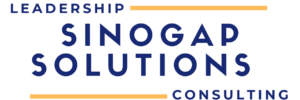My name is Samantha Malec, I am the Executive Assistant at Sinogap Solutions. I am also attending the University of Victoria as a 3rd-year student in the Gustavson School of Business. A unique program requirement for me is participating in a co-op, a short-term paid internship. Co-op positions can be taken anywhere in the world, and this year because of the pandemic, there was the added option of working remotely from the comfort of your own home.
Although working remotely posed as an interesting opportunity, I was nervous about pursuing a remote placement. My friend, Lisa, shared with me what her virtual work experience was like last summer. She shared with me that she wished she had waited for the opportunity to work in an actual office instead of working in a virtual environment. Lisa expressed that she did not feel like she was a valued member of the team she was working with. Her employer did not conduct consistent one-on-one meetings with her to check in on how she was doing, and touch-base on how she was finding her work experience.
From what Lisa shared with me, it was clear that her employer made little to no effort to develop a relationship with her. If they had put in the time to get to know her better, they would have got a much better understanding of her potential. As the summer progressed, Lisa disliked her work more and more. One of the primary reasons Lisa did not get to know her team very well was that she communicated with her team almost exclusively through e-mail. Lisa would be sent tasks and was not provided with any information on the tasks larger purpose or importance. Due to this, Lisa felt as though she was not a valued member of the organization she was working for.
Lisa’s virtual internship experience is what negatively skewed my perceptions about remote work. Some of my biggest apprehensions about working remotely were:
What would my onboarding be like?
Would I be assigned pointless tasks to fill my day?
Would I end up disliking my internship experience just as Lisa did with hers?
Despite my apprehensions, I decided to take the leap into a virtual internship when presented with the opportunity to work at Sinogap Solutions, a leadership consulting firm based out of Alberta. The founder and CEO, Dr. Johanna Pagonis, was looking at hiring her first employee who would help her with a variety of tasks from basic administrative duties, to supporting the design and launch of a marketing strategy. At the point of me writing this blog, I have been here for a little over three months. I am happy to report that I don’t hate my job. In fact, I am having a fantastic work experience.
The reason I am writing this blog is to share five reasons why my virtual internship has been my favourite job to date.


Not surprised at all that this was your experience with Sinogap Solutions. This is why she’s leading the way in helping others lead the way … In a good way.
Thank you so much Angela.